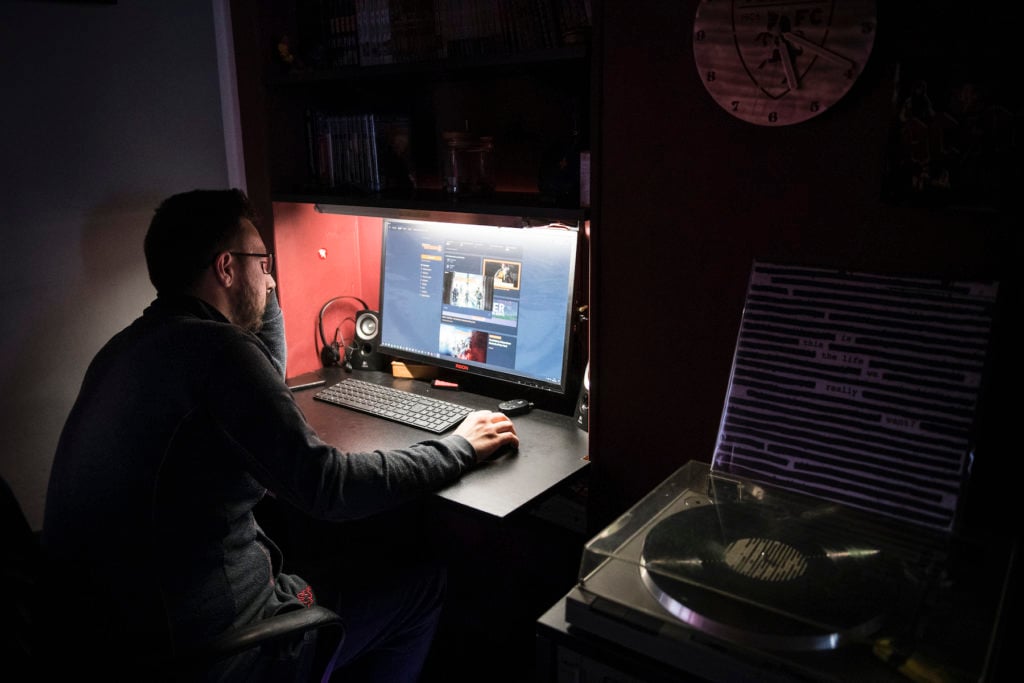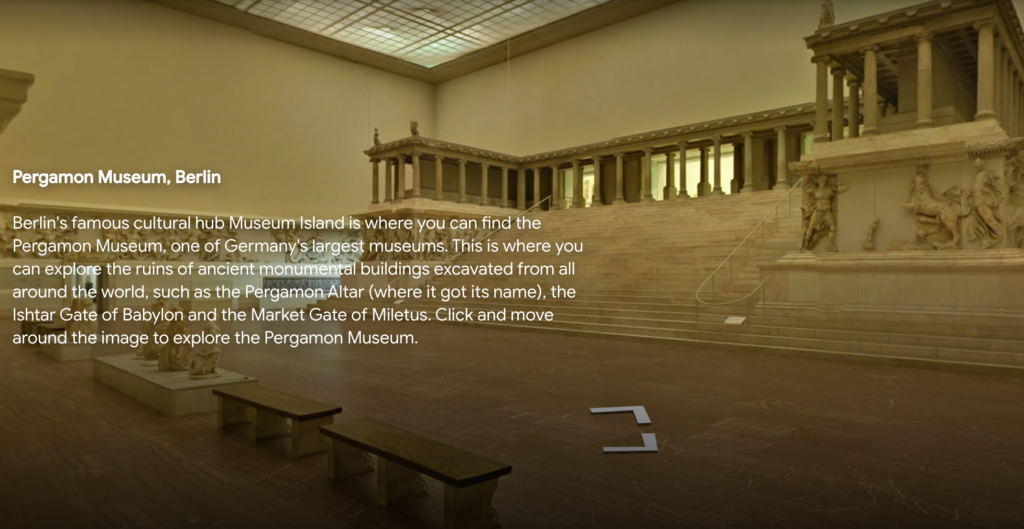Opinion
How We Should Reimagine Art’s Mission in the Time of ‘Social Distancing’
Passive cultural consumption is going to make us feel disempowered and alienated just when we need to maintain social connection.

Passive cultural consumption is going to make us feel disempowered and alienated just when we need to maintain social connection.

Ben Davis

Honestly, I have no idea about how best to write about art right now. What I had wanted to say, when I began this essay last week, is very different than what feels urgent now. This is a full-spectrum disaster. It is unfolding fast.
I keep thinking about those video clips from Italy last week of people singing on their balconies, offering a little bit of joy to each other amid the mandatory shelter-in-place order.
That feels long ago. And I don’t blame you if these clips already feel trite, just as thoughts about art in general probably feel trite right now.
Yet times of crisis bring clarity. For myself, the realities of “social distancing” are throwing into relief what the socially necessary uses of art actually are. And I keep thinking about those balcony singers as a basic metaphor for how to think about the problem.
Right now, except for health care providers and other essential workers, we need to be keeping apart to starve the virus of new hosts. That act of “social distancing” is the most basic act of social solidarity.
As even the first real week of attempted mass self-isolation in New York shows, this is hard. Humans are naturally gregarious animals; we define ourselves by our social interactions. It is not for nothing that “solitary confinement” is considered a particularly cruel form of punishment.
What will make self-confinement bearable?
Immediately an answer was ready to hand: cultural consumption—or whatever cultural consumption can be done remotely, at least.
And so, as the weight of the new shut-in reality settled in, you have probably been hit by a deluge of articles offering helpful lists of things to stream while stuck inside. So many people are streaming in quarantined Europe that Netflix and YouTube are being forced to slow down, to cope with the strain.
If you follow art, I am sure your feed has also been peppered with articles about “virtual tours” you can take of the world’s great museums. You’ve been offered virtual art exhibitions, virtual panel discussions, and virtual viewing rooms to keep your mind engaged and entertained and edified.

A woman watches a Netflix TV series on the laptop at home to pass the time after the Italian government advised citizens to stay at home in an attempt to slow the spread of the Coronavirus on March 15, 2020 in Turin, Italy. Photo by Stefano Guidi/Getty Images.
When the “social distancing” edict arrived, I’m sure that I am not the only one who was comforted by the first, naïve thought: well, this won’t be that different than my ordinary life.
How much time do I already spend reading on the web or otherwise, or streaming TV, or playing video games? How much of my knowledge of my peer group is filtered through social media? How much of my work as a writer can be done from home? A lot!
The “digital divide” in internet access is very real, and more cruelly felt than ever right now. Still, the culture industries have been preparing its core consumers for our new shut-in life for some time. Americans had already been going out less. They had also been spending staggering amounts of time with screens—about half the waking day. Young people are going out to date less, going to parties less, having sex less, drinking less—pretty much everything less except spending time with screens.
Last year, the second-most-read article on the New York Times—above the Epstein scandal, the Notre Dame fire, and real-life UFO sightings—was a list of suggestions for what to watch on Netflix.
As for art, it’s been clear for some time that experiencing it through the lens of social-media pictures and online debate has been crowding out interest in the in-person experience of the art object. At the very least, the social media feed had already become the main gateway for interest in culture.
What kind of culture makes us feel sustained and whole, rather than furthering feelings of isolation and angst?
That’s actually a non-trivial question right now, because so much depends on pulling off the trick of sustaining lots of people through an extended period of being cut off from their communities.
If the mandatory “social distancing” regime appears likely to dramatically extend the pre-existing trend of cultural life migrating into mediated spaces, it will also be felt as a dramatic ratification of another trend: the so-called “loneliness epidemic,” with more and more people saying that they feel left out and alienated.
Just how much of the recent (pre-corona) spike in depression and anxiety is directly attributable to technology, and how much to the hyper-competitive and unstable capitalist world that technology is embedded in, is worth debating. What’s clear, however, is that the tools that make social connection and diversion easier can also make people feel more disconnected and alienated.

A man plays a video game at home to pass the time after the Italian government advised citizens to stay at home in an attempt to slow the spread of the Coronavirus on March 15, 2020 in Turin, Italy. Photo by Stefano Guidi/Getty Images.
Binge watching and video gaming offer ready worlds to vanish into. Apart from serving as entertainment, such immersion in media can be a form of coping, a way to block out thoughts of outside reality.
Yet precisely because streaming TV or video games can be so absorbing, both have the potential to foster a sense of being cut off from others as well, if consumed to excess. In both cases, researchers talk seriously of potential addiction, which both thrives in people who are isolated and further intensifies feelings of isolation, in a spiral—a real danger, one would think, right now.
There has been earnest psychological concern that, for people who suffer from various forms of anxiety, forming fictional “parasocial relationships” with TV characters or YouTube stars has been a way to substitute for the messy work of tending to real friend networks.
If there’s truth to that concern at all, then the very plethora of “good enough” substitutes for going out that now make it easier to practice “social distancing” at the start of this crisis also means that the social fabric is more fragile when it comes to the mutual aid and emotional support needed to sustain over the long haul.

Street view of the Pergamon Museum in Berlin on Google Arts and Culture.
Which brings me back to the question of how to think about art in this moment.
Why, I ask myself, do I find most of the virtual museum tours available online so disheartening? I roam the halls of the virtual Uffizi or the virtual Met in the Google Art Project and find it good for a few clicks worth of novelty and not much more. I find it hard to imagine such experiences giving anyone much lasting comfort, unless they are studying for a test.
I find they make me feel a lack instead of filling a lack.
We tend to think of the ideal imaginary type of museum experience as solitary—the solo pilgrim going to be inspired by art. Yet in this period of enforced solitude, the paradox is that this way of valuing art is probably the least likely to lend itself to remote simulation.
Leaving your everyday space and going somewhere special is part of the point of that kind of experience (and one we’ll probably all appreciate more when we are through this).
But the “solo pilgrim” model is just one way of thinking about what art does—and not the most common one, either. The more common reason people visit a museum is social, as a prop for being together, as a sort of puzzle to figure out with friends or companions. Art is, at its most stripped down level, something that people like to talk about—a kind of symbolic currency people pass between one another, a bank of images to give a shape to shared meaning.
And while we can’t literally be together just now, our hyper-mediated tools do offer ways to tap into these social parts of art experience.
For culture to do its most nourishing work in helping us through this difficult time, we need to shake the idea that it is about the isolated consumption of images. Consuming culture passively mirrors a sense of helplessness and atomization.
Maybe realizing that mission looks as simple as the example of all the virtual discussion groups, virtual study sessions, virtual film clubs that are springing up now, where you can turn isolated experiences into more shared ones about how it feels to try and make sense of the world right now, amid a plague.
Or maybe people have better models. I’m on the active lookout for them.
There’s another video from Italy, this one filmmaker Olmo Parenti, that you may have seen. Posted by the Atlantic, it’s titled “Urgent Messages from Italians in Coronavirus Quarantine.”
The conceit is that it features ordinary Italians advising their own selves of just 10 days before about how naive they had been about what was coming—actually a message to the rest of the world about the need to brace itself.
But there is a little consolation in it amid the warnings. “You’ll live moments of unity you would’ve never imagined,” one woman promises her earlier, pre-isolation self, “like yesterday when we all got out on our balconies. Everyone was singing their own song, but somehow we were all one thing.”
Pareti’s video was posted just a week ago. Its jaunty tone already dates it. Who knows if the same woman would find the comfort she took in that spectacle of clamorous unity just as naive today as she found her earlier attitude then.
We will need to be outraged and alert as society rattles all around us. The world is very frightening right now. A lot of our creative energies will be faced outwards: towards protest, towards offering solidarity to front line workers, towards public mourning.
But as of now I still believe in the basic message. We also need to sustain each other for the long haul through a period of necessary seclusion while maintaining a sense of common purpose. To be helpful in that task, we need art’s resources of social connection, to keep us together, symbolically, as we are physically apart.